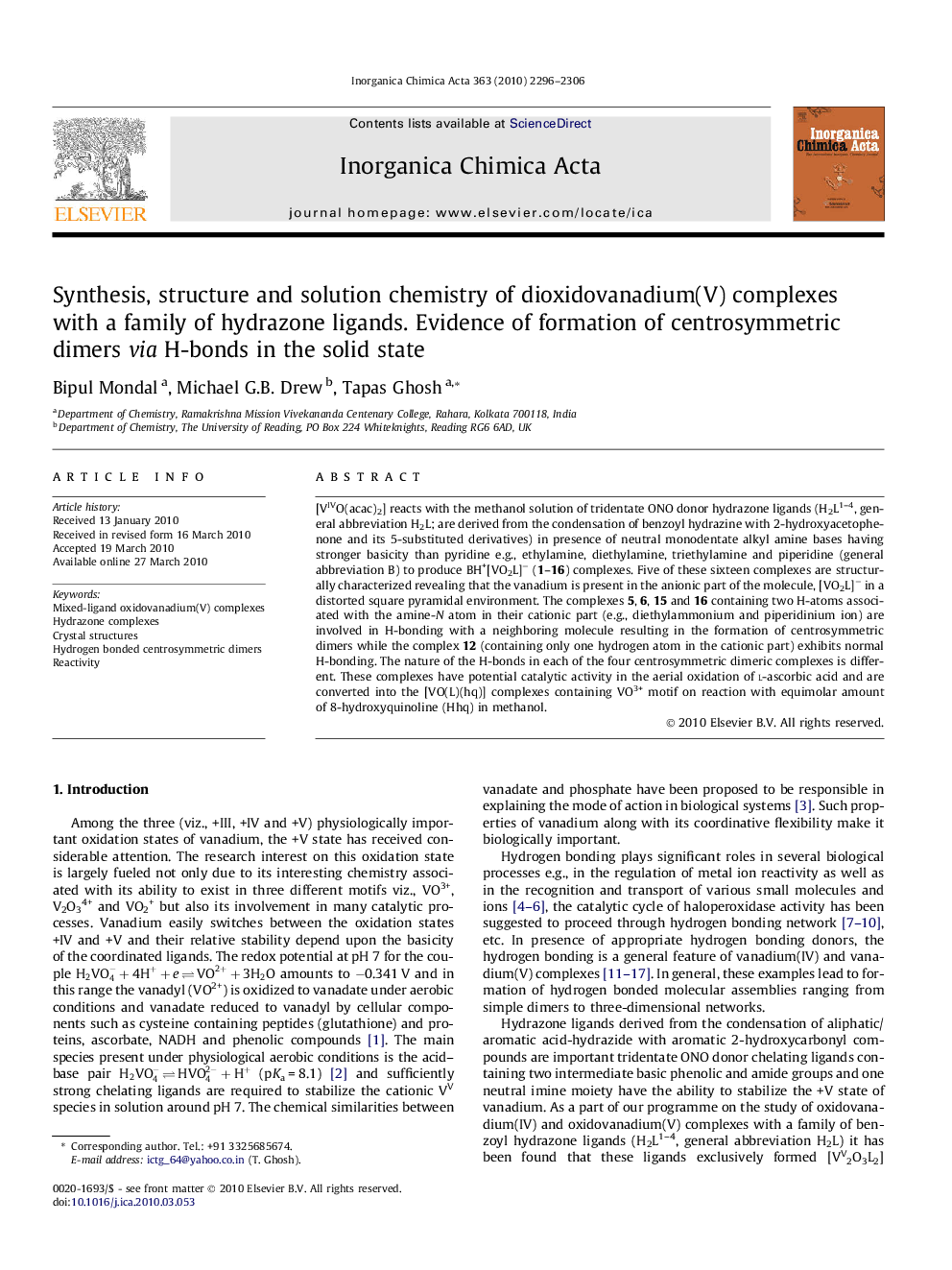| Article ID | Journal | Published Year | Pages | File Type |
|---|---|---|---|---|
| 1312583 | Inorganica Chimica Acta | 2010 | 11 Pages |
[VIVO(acac)2] reacts with the methanol solution of tridentate ONO donor hydrazone ligands (H2L1–4, general abbreviation H2L; are derived from the condensation of benzoyl hydrazine with 2-hydroxyacetophenone and its 5-substituted derivatives) in presence of neutral monodentate alkyl amine bases having stronger basicity than pyridine e.g., ethylamine, diethylamine, triethylamine and piperidine (general abbreviation B) to produce BH+[VO2L]− (1–16) complexes. Five of these sixteen complexes are structurally characterized revealing that the vanadium is present in the anionic part of the molecule, [VO2L]− in a distorted square pyramidal environment. The complexes 5, 6, 15 and 16 containing two H-atoms associated with the amine-N atom in their cationic part (e.g., diethylammonium and piperidinium ion) are involved in H-bonding with a neighboring molecule resulting in the formation of centrosymmetric dimers while the complex 12 (containing only one hydrogen atom in the cationic part) exhibits normal H-bonding. The nature of the H-bonds in each of the four centrosymmetric dimeric complexes is different. These complexes have potential catalytic activity in the aerial oxidation of l-ascorbic acid and are converted into the [VO(L)(hq)] complexes containing VO3+ motif on reaction with equimolar amount of 8-hydroxyquinoline (Hhq) in methanol.
Graphical abstractAmong the sixteen dioxidovanadium(V) complexes of the type (alkyl amineH+) [VO2(benzoyl hydrazone)]− reported here, the H-bonded centrosymmetric dimeric dioxidovanadium(V) complexes have been found to exist in the solid state only with diethylamine and piperidine. All these complexes exhibit ascorbic acid oxidase activity.Figure optionsDownload full-size imageDownload as PowerPoint slide
